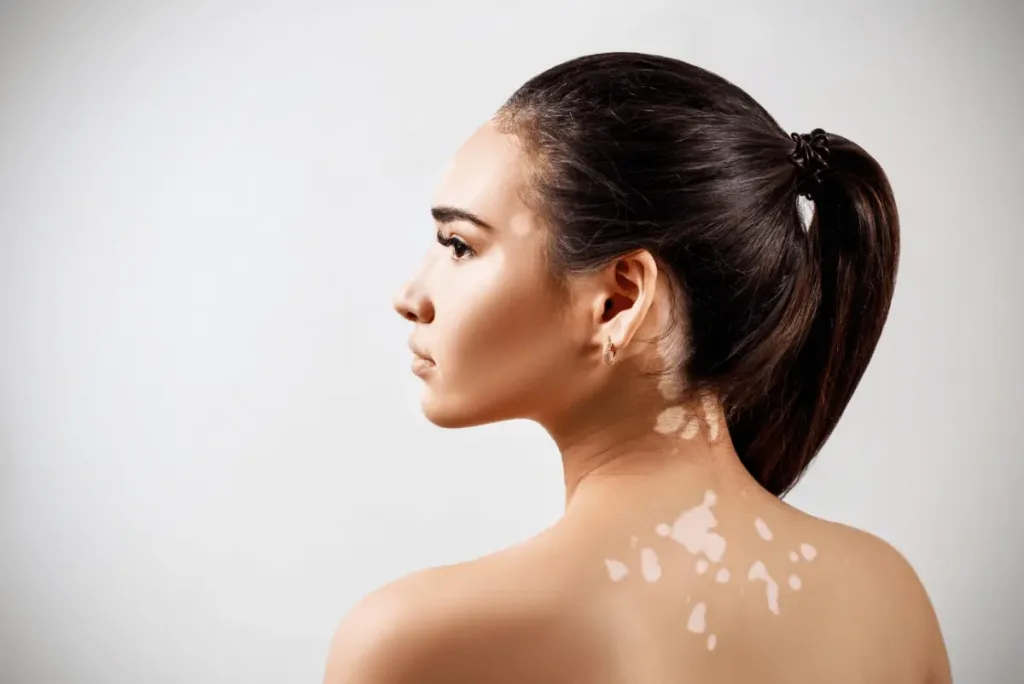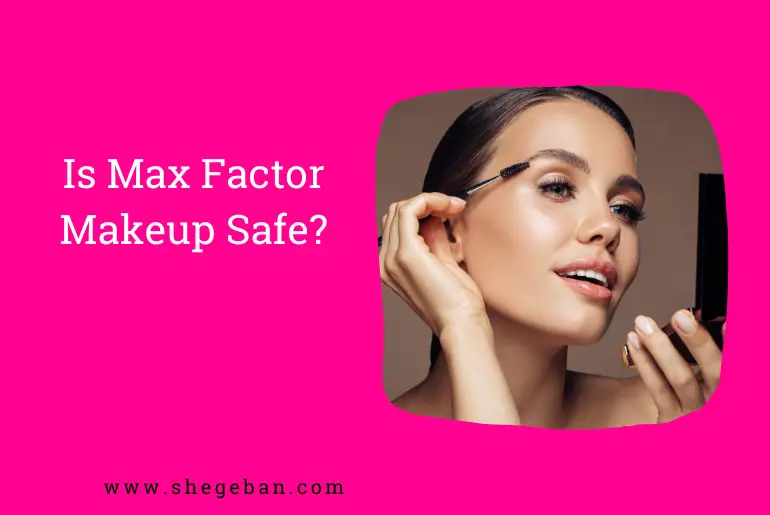Living with vitiligo comes with self-awareness and consciousness except you are one of those who have embraced the reality of living with it in its entirety. While vitiligo is not a quick fix, you might have considered using concealer as a temporary fix. This begs the question, can concealer cover vitiligo?
Yes, concealer can provide temporary coverage for vitiligo by applying it to the affected areas. It’s worth noting that it can be applied to any part of the body, as long as it is chosen thoughtfully and applied correctly.
In this blog post, I’ll share the limitations of using concealer for vitiligo and tips for using concealer for vitiligo. Furthermore, I’ll discuss the best concealers for vitiligo and answer some questions.
How to Use Concealer to Cover Vitiligo
Covering vitiligo with concealer can be an effective way to temporarily mask the depigmented areas and achieve a more uniform skin tone. Here’s a step-by-step guide on how to use concealer to cover vitiligo:
1. Start with moisturizer
To do this, gently cleanse and apply your regular moisturizer to create a smooth base.
2. Apply primer
If you have a makeup primer, apply a thin, even layer to the vitiligo-affected areas. Allow it to set for a minute or two.
3. Apply concealer
Using a clean makeup brush, sponge, or your fingertips, apply a small amount of concealer directly to the depigmented areas. Start with a light layer and build up coverage as needed.
Gently pat or dab the concealer onto the vitiligo-affected skin. Avoid rubbing, as this can disrupt coverage.
4. Blend carefully
Blend the concealer outward, feathering the edges to create a seamless transition between the treated area and the surrounding skin.
Continue to blend until the concealer disappears into the skin, leaving a natural appearance.
5. Set with powder
To enhance the longevity of the concealer, apply a light layer of setting powder over the concealed area. Use a makeup brush to gently pat the powder onto the skin.
What Are the Challenges and Limitations of Using Concealer for Vitiligo?
When it comes to using concealer to cover vitiligo, there are potential challenges and limitations to consider:
1. It’s difficult to find the right shade
One of the primary challenges is finding the right concealer shade to match the varying tones of vitiligo-affected skin. Vitiligo often results in depigmented patches of skin, and it can be difficult to find a concealer that perfectly matches these areas. Mismatched shades can make the condition more noticeable.
2. It lacks coverage
Vitiligo-affected skin can have a different texture compared to the surrounding healthy skin. Concealers may not adhere as well to the uneven surface, making it challenging to achieve a smooth and natural finish.
3. The coverage it offers does not last
Concealers may not offer long-lasting coverage, especially in areas prone to friction or moisture, such as the hands or feet. Over time, the concealer may wear off, requiring frequent reapplication.
4. Concealer will eventually smudge
Keeping concealer in place throughout the day can be challenging. Sweat, humidity, and environmental factors can cause it to smudge or fade, requiring regular touch-ups.
5. Effective vitiligo concealers are expensive
High-quality concealers specifically formulated for vitiligo coverage can be expensive. Additionally, they may not be readily available in all regions, limiting accessibility for some individuals.
6. Concealer could lead to skin sensitivity
People with vitiligo may have sensitive skin, and some concealers or makeup products may irritate or worsen the condition. It’s important to choose hypoallergenic and dermatologist-tested products.
7. It takes time
Achieving an even and natural appearance with concealer can be a skill that takes time to develop. It may require practice and experimentation with different products and techniques.
Tips for Using Concealer for Vitiligo
When it comes to using concealer to cover vitiligo, I’ve learned from personal experience that a few tips can make a significant difference in achieving the best results:
- Start with clean moisturized skin as it helps to remove oil or impurities that could affect the concealer’s adherence.
- Primer helps if you want to improve the longevity of the concealer.
- Use a Color Corrector for areas with severe discoloration. Go for peach or orange-toned correctors to neutralize bluish or grayish tones often seen in vitiligo.
- Opt for a concealer that matches your skin tone as closely as possible. I’ve found that cream or liquid concealers tend to work well for vitiligo coverage due to their blendability.
- Start with a minimal amount and build up as needed.
- Patting or dabbing motions work better than rubbing to avoid disturbing the concealer’s coverage.
- Apply multiple thin layers of concealer rather than one thick layer for a more natural look.
Top Best Concealers for Vitiligo
1. Daily vitiligo cover cream set
This makeup set is formulated to provide coverage that is both waterproof and long-lasting, ensuring that it remains intact throughout the day, even in challenging conditions.
It is a blend of solutions to cover a range of imperfections, including vitiligo, scars, tattoos, patches, and birthmarks. Furthermore, its waterproof formula ensures that the makeup remains intact and smudge-free, even when exposed to moisture, such as sweat or rain.
2. Glossiva waterproof concealer for vitiligo
This concealer boats a formulation that can conceal a variety of skin imperfections, including vitiligo, dark spots, scars, and tattoos. Also, it has waterproof properties which makes it suitable for use on different parts of the body, including the legs.
It comes in a big size, ( 248.9g) which ensures that it lasts for an extended period. Its high-pigment ingredients effectively mask imperfections and promote a more uniform skin tone.
3. Binbeiv vitiligo cosmetic
It is formulated to address the appearance of skin depigmentation, particularly in cases of vitiligo. One of its perks is that it offers a natural, durable, and waterproof solution for the face, hands, and body.
Also, it provides a natural-looking finish that blends seamlessly with the surrounding skin. Notably, this cosmetic ensures that the coverage remains intact for an extended period, reducing the need for frequent touch-ups.
Can I Wear Makeup if I Have Vitiligo?
Yes, you can absolutely wear makeup if you have vitiligo. Many specialized concealers and cosmetics are available t to effectively cover vitiligo while offering a natural look. While at it, choose high-quality, hypoallergenic products and follow proper application techniques to ensure the makeup blends seamlessly and doesn’t exacerbate the condition.
Does Concealer Adversely Affect Vitiligo?
Concealer, when used appropriately and with consideration for individual skin sensitivities, generally does not adversely affect vitiligo itself. In fact, it is a temporary cosmetic solution to mask depigmented areas and can be empowering for individuals with vitiligo to enhance their self-confidence.
Conclusion
In conclusion, the use of concealer to cover vitiligo can be a valuable cosmetic tool for individuals seeking to temporarily mask the appearance of depigmented skin. When used correctly, concealer generally does not harm vitiligo itself.
However, select suitable, skin-friendly products, practice proper skincare routines, and be mindful of individual skin sensitivities.










